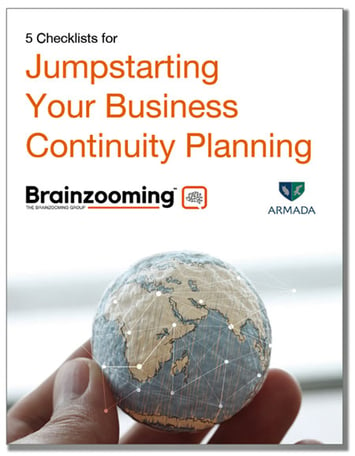Here's another great post from Woody Bendle, who debuted as a guest Brainzooming blogger last week. In the intro on Woody's first Brainzooming post, I didn't go into much biographical information on him. An economist by training, Woody is currently the Director, Insights & Innovation at Collective Brands, Inc. in Topeka, KS. Previously he was with Blockbuster as Vice President of Marketing, Customer Analytics & Strategic Systems. Today, Woody Bendle is sharing his perspective on how innovation and improvement can both be continuous.
Continuous Innovation and Continuous Improvement
 Executives face constant pressure to increase shareholder value. For the past several decades, one answer to this challenge has been to strip away inefficient processes and unnecessary costs. The bottom line benefits to Continuous Process Improvement programs (i.e., Lean Six Sigma) and DMAIC methods are well documented with organizations such as Toyota and General Electric (pdf). At some point however, improving profits through cost cutting approaches a limit, but there is still the pressing need to create more shareholder value. The answer - Innovation.
Executives face constant pressure to increase shareholder value. For the past several decades, one answer to this challenge has been to strip away inefficient processes and unnecessary costs. The bottom line benefits to Continuous Process Improvement programs (i.e., Lean Six Sigma) and DMAIC methods are well documented with organizations such as Toyota and General Electric (pdf). At some point however, improving profits through cost cutting approaches a limit, but there is still the pressing need to create more shareholder value. The answer - Innovation.
Innovation Is Everywhere
The word "innovation" is everywhere today. And frankly, I feel it is approaching overuse. It seems as though every other commercial on TV makes an overt innovation claim. President Obama even used the word six times and ingenuity twice in his 2012 State of the Union address. A quick search on Google Trends shows a steady increase in news reference volume since the beginning of 2008. This timing is not coincidental. As the recession set in and the benefits to Continuous Improvement initiatives began to level off, firms increasingly began to realize that they needed to innovate in order to drive the top line. In fact, in a 2010 report from the Boston Consulting Group (pdf), 84 percent of the nearly 1,600 global executives surveyed said they "consider innovation an important or extremely important lever in its ability to reap the benefits of an economic recovery." So, while the word may be overused in today's culture, the need for it is very real.
Seeking innovation mojo
To me, trying to regain innovativeness is one of the greatest ironies of businesses. Most, if not all firms start out as an innovation of some sort. However, many organizations, in their quest to become ever efficient as they scale, unfortunately lose their innovation mojo. Or as is described by Dyer, Gregersen, and Christensen in "The Innovator's DNA", the pursuit of 'Delivery' often displaces an organization's 'Discovery' capabilities. But as the authors point out, 'Delivery' (or execution) is critical for producing results and "translating an innovative idea into reality." Put another way, processes are needed in order to repeatedly take new ideas to market and create consumer and shareholder value. To become continuously innovative, organizations need to employ a continuous innovation process.
Yes… And
I recently gave a talk and during the Q&A session was asked whether Innovation and Continuous Improvement could really coexist. I suspect that many reading this are also asking the same question. My answer is a resounding Yes… And. Yes, I do believe they can coexist, And, in order for an organization to thrive, they need to coexist. I tend to think about the two as best friends - if not perhaps even Siamese twins. On the surface, these two concepts do seem to be diametrically opposed. Continuous Improvement is all about defining, refining, and measuring (left brain stuff). Innovation… well, it is about creativity (right brain stuff). Left brain, right brain, cats and dogs, oil and water, how can the two coexist? But, the principles and practices of Continuous Improvement are actually the foundation of a sustainable Innovation competency.
i3 Continuous Innovation
If any organization intends to grow continuously though innovation, they must adopt repeatable processes which will allow them to systematically:
1) Identify opportunities for new products or services
2) Innovate and create new products or services
3) Implement and scale
That's it - the Continuous Innovation process essentially boils down to these three steps: 1) Identify, 2) Innovate, 3) Implement (i3); which feels quite similar to Define, Measure, Analyze, Improve and Control (DMAIC). Further, an effective and efficient Innovation Process will incorporate the DMAIC process throughout each step of the i3 Continuous Innovation process. Thus, innovation benefits from, and is reinforced through continuous improvement. And as W. Edwards Deming stated in "The New Economics", "Absence of defects does not necessarily build business… something more is required."
And that something is innovation. - Woody Bendle




